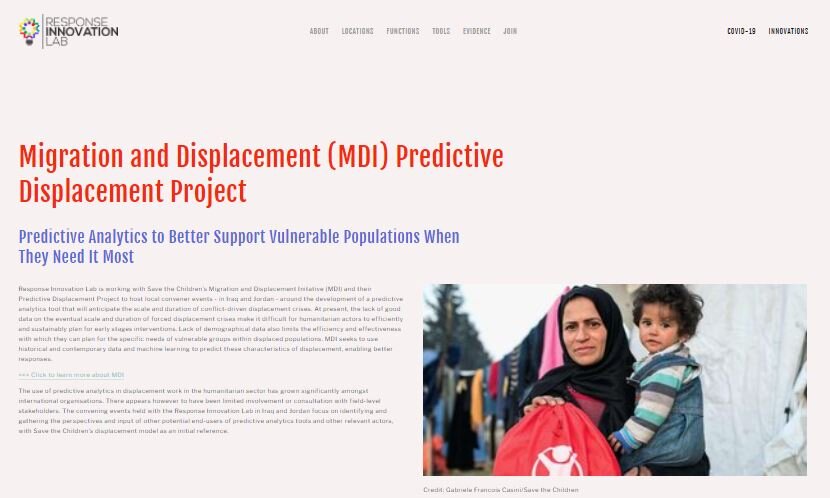Convening Ecosystem Actors on Predictive Analytics for Migration Displacement
Response Innovation Lab worked with Save the Children’s Migration and Displacement Initiative (MDI) and their Predictive Displacement Project to host local Convener events - in Iraq and Jordan - around the development of a predictive analytics tool that will anticipate the scale and duration of conflict-driven displacement crises. At present, the lack of good data on the eventual scale and duration of forced displacement crises makes it difficult for humanitarian actors to efficiently and sustainably plan for early-stage interventions. Lack of demographical data also limits the efficiency and effectiveness with which they can plan for the specific needs of vulnerable groups within displaced populations. MDI seeks to use historical and contemporary data and machine learning to predict these characteristics of displacement, enabling better responses.
The use of predictive analytics in displacement work in the humanitarian sector has grown significantly amongst international organizations. However limited involvement or consultation has happened with field-level stakeholders. The convening events held with the Response Innovation Lab in Iraq and Jordan focus on identifying and gathering the perspectives and input of other potential end-users and other relevant stakeholders of predictive analytics tools, with Save the Children’s displacement model as an initial reference.
Particularly, the interest is in actors not well represented in typical discussions around predictive analytics in the humanitarian sector, such as
National and sub-national level actors working on displacement issues
Local and regional research and policy centers
Commercial actors with a stake in predicting population movements
The input of these actors will help shape the thinking for the third, external-facing phase of the project, and be a network through which to rollout other predictive tools. Learnings from the exercise will be shared with other humanitarian actors to similarly inform their work.

